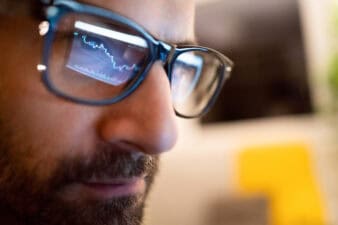Geopolitical tension gripped global financial markets last week, sending shock waves to stock exchanges. The S&P/TSX Composite Index closed lower on February 18, 2022, after two consecutive weekly gains. Canada’s primary stock benchmark lost 540.60 points in five trading days to close lower at 21,008.20.
The index is down 1.01% year-to-date and faces more uncertainties ahead due to the Russia-Ukraine border crisis. Nations involved are exhausting diplomatic efforts to prevent a military conflict. Now, the case for a bear market is getting stronger. Technically speaking, the stock market enters a bear market when its drops 20% or more from recent highs.
Individual stocks may also experience sharp declines and cause panic. However, many investors stay on instead of pulling out. Among the go-to stocks is the Bank of Montreal (TSX:BMO)(NYSE:BMO). Canada’s first bank is a safe harbour for its resiliency to endure economic downturns and recessions.
Developing bear market
The bear market in 2020 was sudden in the wake of the coronavirus breakout. On March 12, 2020, the TSX suffered its biggest single-day drop since 1940, falling 12.3%. Also on the same day, the index’s loss from its high on February 20, 2020, rose to 30.3%.
Fortunately, the COVID-induced bear market was the shortest in history. Stocks started ascending after one month. But the most notable bear market in contemporary times was the global financial crisis. It ran from October 2007 to March 2009. The TSX rebounded from both, posting total returns of 21.74% and 30.69% in 2021 and 2009.
The situation in February 2022 is different. Besides rising inflation, there’s a geopolitical crisis. Market analysts fear a longer bear market and recovery period if war erupts. It could erase the gains from the bull market and impact negatively on retirement accounts of stock investors.
Sustained long-term performance
BMO had a great fiscal 2021 with net income reaching $7.75 billion, a 52% increase versus fiscal 2020. In Q4 fiscal 2021, the Canadian and U.S. private & commercial banking business segments reported 42% and 58% net income growths compared with Q4 fiscal 2020.
Darryl White, CEO of BMO Financial Group, said, “We’ve taken action to improve our competitive position through a disciplined approach to expense management, capital allocation and investment in future growth.”
White is confident that BMO can deliver sustained, long-term performance to its shareholders. The $94.95 billion bank announced a 25% increase in December 2021, the largest percentage hike among the Big Six banks. Management also plans to buy back $3 billion worth of shares. According to its CEO, both moves reflect BMO’s strong capital position.
Note that BMO is TSX’s dividend pioneer. The bank stock started paying dividends in 1829. If you invest today, the share price is $146.48 (+8.56% year-to-date), while the dividend yield is 3.63%.
Buy rating
Canada’s Big Six banks will report their Q1 fiscal 2022 results beginning this week until March 1, 2022. Mike Rizvanovic, an analyst for Credit Suisse, recommends a buy rating for BMO. With the looming higher interest rate hike cycle as the banking sector’s tailwind, he sees a 17% upside potential in 12 months. Rizvanovic adds the recent acquisition of the Bank of the West is a material upside. BMO will have an expanded U.S. footprint in 2022.








